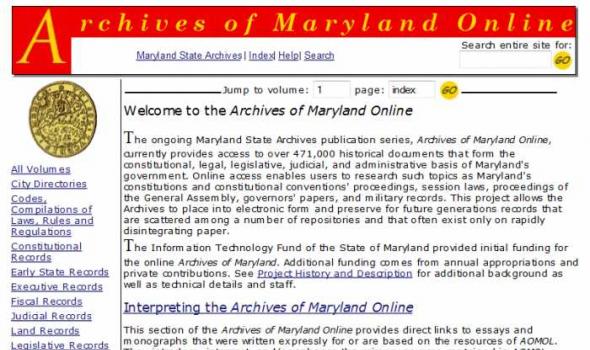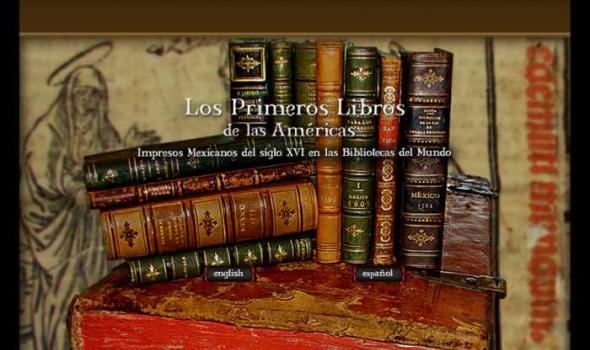Category: Social Sciences
Results
ANNOUNCEMENTS The continued Web presence of the Papyrology Collection is made possible by: The University of Michigan Library , The National Endowment for the Humanities , The Dorot Foundation , The Center for Research on Learning and Teaching (CRLT) , U-M Office of the Vice President for Research , The R.G. Conger Fund, The Edwin E. and Mary U. Meader Papyrology Endowment, and The Parsons Fund. CONTACT We welcome your feedback on our web site. University Library 818 Hatcher Graduate Library South 913 S. University Avenue Ann Arbor, MI 48109-1190
About the Photo Collection Share with Friends The San Francisco Historical Photograph Collection contains photographs and works on papers of San Francisco and California scenes ranging from 1850 to the present. This collection includes views of San Francisco street scenes, buildings, and neighborhoods, as well as photographs of famous San Francisco personalities. The collection consists mostly of the photo morgue of the San Francisco News-Call Bulletin , a daily newspaper, ranging from 1920s to 1965. The collection also contains albums, slides, postcards, cabinet cards, stereoviews, and lantern slides of San Francisco and California subjects. Copies of images may be ordered with the Reproduction of Images Form (PDF 31K).
Cambridge Digital Library Introducing the Cambridge Digital Library Cambridge University Library contains evidence of some of the greatest ideas and discoveries over two millennia. We want to make our collections accessible to anyone, anywhere in the world with an internet connection and a thirst for knowledge." —Anne Jarvis, University Librarian Over the course of six centuries Cambridge University Library's collections have grown from a few dozen volumes into one of the world's great libraries, with an extraordinary accumulation of books, maps, manuscripts and journals. These cover every conceivable aspect of human endeavour, spanning most of the world's cultural traditions.
Maryland Digital Cultural Heritage About Maryland Digital Cultural Heritage (MDCH) is a collaborative, statewide digitization program headquartered at the Enoch Pratt Free Library/State Library Resource Center in Baltimore. Our program partners with Maryland libraries, archives, historical societies, museums, and other institutions to digitize and provide free online access to materials relating to the state's history and culture. Since the program began in 2002, MDCH's collections have grown to include over 5,000 items, such as maps, manuscripts, photographs, artwork, books, and other media. Tips for using our digital collections:
About Calisphere Calisphere is the University of California's free public gateway to a world of primary sources. More than 200,000 digitized items — including photographs, documents, newspaper pages, political cartoons, works of art, diaries, transcribed oral histories, advertising, and other unique cultural artifacts — reveal the diverse history and culture of California and its role in national and world history. Calisphere's content has been selected from the libraries and museums of the UC campuses, and from a variety of cultural heritage organizations across California. See the list of contributing institutions. Calisphere is a public service project of the California Digital Library (CDL).
T he ongoing Maryland State Archives publication series, Archives of Maryland Online , currently provides access to over 471,000 historical documents that form the constitutional, legal, legislative, judicial, and administrative basis of Maryland's government. Online access enables users to research such topics as Maryland's constitutions and constitutional conventions' proceedings, session laws, proceedings of the General Assembly, governors' papers, and military records. This project allows the Archives to place into electronic form and preserve for future generations records that are scattered among a number of repositories and that often exist only on rapidly disintegrating paper.
About the Denver Public Library's Western History and Genealogy Digital Collections The Digital Collections had their origins in the Photo Digitization Project which was started in the early 1990’s by Augie Mastrogiuseppe, the Library’s Curator of Photographs at the time. The project’s goal was to improve access to the Western History photograph collection and help preserve the original items by creating digital copies. Over the years, the project was funded by grants from organizations including the Boettcher Foundation, the National Endowment for the Humanities, and the Colorado Historic Fund.
About Volunteer Voices Volunteer Voices is Tennessee's statewide digitization program involving the state's archives, libraries, repositories, historic homes and museums. Its goals are to improve access to digital collections that document Tennessee's history and culture, facilitate use of these collections in K-16 classrooms and by the general public; and offer training opportunities for personnel to learn digitization standards and best practices. This new Volunteer Voices website offers a single access point for searching digital collections across the state. The current site searches the following collections: The Growth of Democracy in Tennessee, the collection that most Tennesseans associate with Volunteer Voices.
Primeros Libros Project Agreement The Impresos Mexicanos del Siglo XVI project will build a digital collection of the first books printed in Mexico before 1601. These monographs are very important because they represent the first printing in the New World and provide primary sources for scholarly studies focused on a variety of academic fields. Approximately 220 unique titles are held in institutions around the world with most held in Mexico and the United States.
About Us About Us Located at the foot of the San Gabriel Mountains in the city of Claremont, California, 35 miles east of Los Angeles, The Claremont Colleges are a geographically contiguous set of five top-ranked liberal arts undergraduate colleges and two graduate institutions, uniquely configured to support and encourage interdisciplinary study. The Claremont Colleges Library, a part of The Colleges' supporting organization, the Claremont University Consortium, support all seven academic institutions across a wide spectrum of disciplines. The library holds more than 2 million print volumes and provides access to a vast array of electronic resources, both subscription and Open Access.
Peace and War in the 20th Century Welcome The twentieth century has been a century of war. It began with the Boer War in South Africa and ended with the Gulf War in Kuwait and Iraq. This tragic legacy suggests that citizens of the twenty-first century have a shared responsibility to attempt to understand how and why these conflicts occurred and to discover how peace efforts contributed to the resolution of international conflicts. The work of understanding, conscientiously conducted, must draw on primary sources of many kinds, including oral histories, newspapers, contemporary journals, government documents, regimental histories, and archives. Archival resources provide us with a direct link to the past.
Connecticut State Library Digital Collections All Collections In 1934 Connecticut became the first state to complete a statewide aerial survey. The State Library has several aerial surveys of the entire state , along with some partial surveys, and has put the 1934, 1938 (partial survey), and 1965 surveys online. Hartford street scenes just after the great snow storm of March 12 th and 13 th , 1888. Views of military life and training at the air base, the Sixth War Loan drive, redeployment, officers and medal presentations to families of servicemen.
History In 2002, the UNT Libraries began planning The Portal to Texas History, a digital gateway to historical materials from private collectors and collaborative partners, including libraries, museums, archives, and other historical groups. Our goal was to structure the Portal in a way that would ensure long-term sustainability. With a ground-swell of support from interested parties, we received a Telecommunications Infrastructure Fund grant from the State of Texas to begin the project. By the end of 2004, the Portal was online with five collaborative partners and over 6500 digital images. About 1,000 visitors a month were using the online collections.
The Digital Library of Appalachia provides online access to archival and historical materials related to the culture of the southern and central Appalachian region. The contents of the DLA are drawn from special collections of Appalachian College Association member libraries.
2011-2013 Program Review Published annually, the USMA Library Program Review details work of the past academic year and projects forward significant initiatives for the coming academic year. It also provides strategic guidance and awareness for the future of academic information and library support at the U.S. Military Academy.
MATRIX, working in cooperation with the African Studies Center at MSU, and in partnership with premiere research institutions in Africa, is pioneering the African Online Digital Library. The goal of this fully accessible online digital repository is to adopt the emerging best practices of the American digital library community and apply them in an African context. AODL benefits a wide variety of scholars, students, and institutions by producing multilingual, multimedia materials for both scholarly research and public viewing audiences. AODL serves scholars and students conducting research and teaching about West and South Africa as well as teachers and students of African languages in both the United States and Africa.
Los Angeles Public Library My Library Account Use the new enhanced My Library Account (which offers an ezlogin option) to renew books, check hold status and suspend holds, save searches, save lists and even provide others with an rss feed of your saved lists . You can also use the traditional catalog's account feature, which also allows on-line fine payments. You are here The Electronic Neighborhood The Electronic Neighborhood is a unique one-stop information resource for information on California and regional history topics.
An Introduction to Memorial Hall Museum's American Centuries: Views from New England This website is unique in many design features that facilitate successful use by educators and students. It includes a large library of primary resources, curricula, and interactive student activities; most of them presented in age-appropriate, user-friendly formats. The Online Collection American Centuries features a digital collection of approximately 2000 objects and transcribed document pages from Memorial Hall Museum and Library. An image of each of these items appears on an Item Page accompanied by interpretive text available on age-appropriate levels.
Welcome to the David Rumsey Map Collection Database and Blog. The Map Database has many viewers and the Blog has numerous categories . The historical map collection has over 34,000 maps and images online. The collection focuses on rare 18th and 19th century North American and South American maps and other cartographic materials. Historic maps of the World, Europe, Asia, and Africa are also represented.
NEWS IN THE CDLI COLLECTIONS CUNEIFORM ANYONE? CDLI depends on the assistance of collaborators of all stripes. Wish to submit files of new texts, or images, transliterations or corrections of entries in our database? Perhaps make a tax-deductible contribution to support our efforts? A DIGITAL LIBRARY FOR CUNEIFORM The Cuneiform Digital Library Initiative (CDLI) represents the efforts of an international group of Assyriologists, museum curators and historians of science to make available through the internet the form and content of cuneiform tablets dating from the beginning of writing, ca. 3350 BC, until the end of the pre-Christian era.































